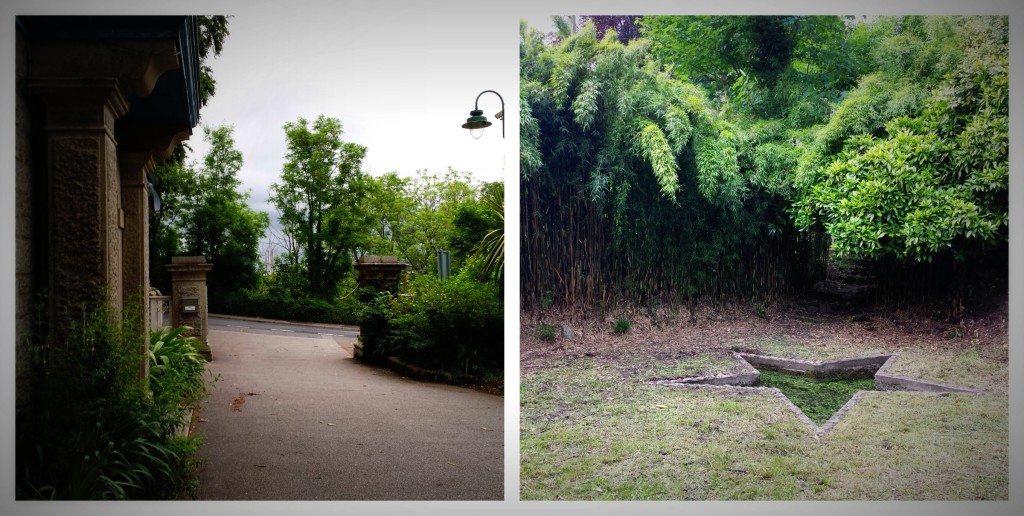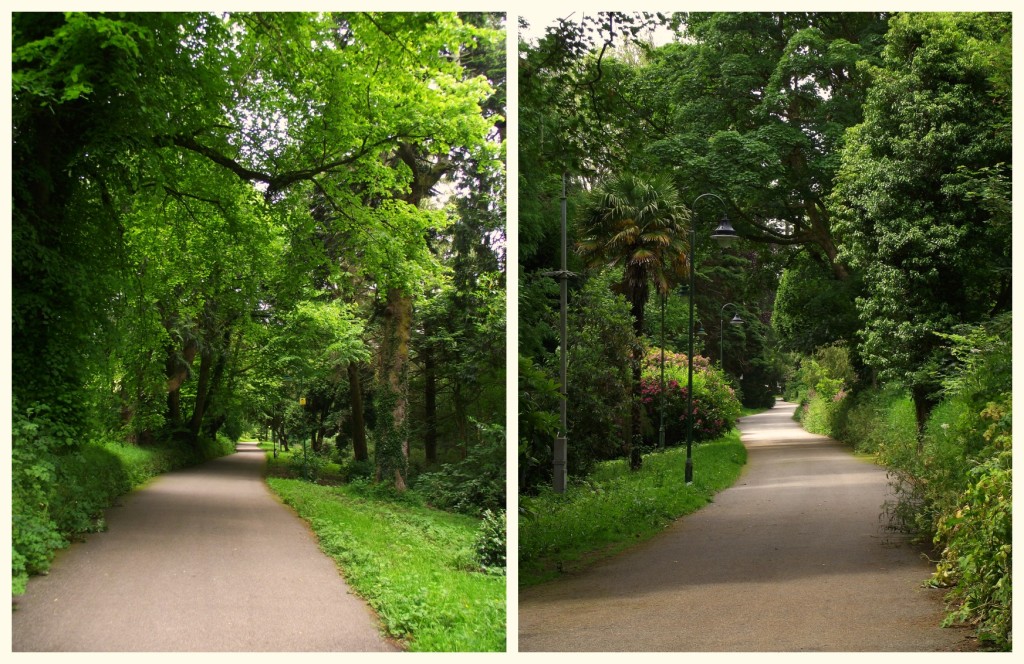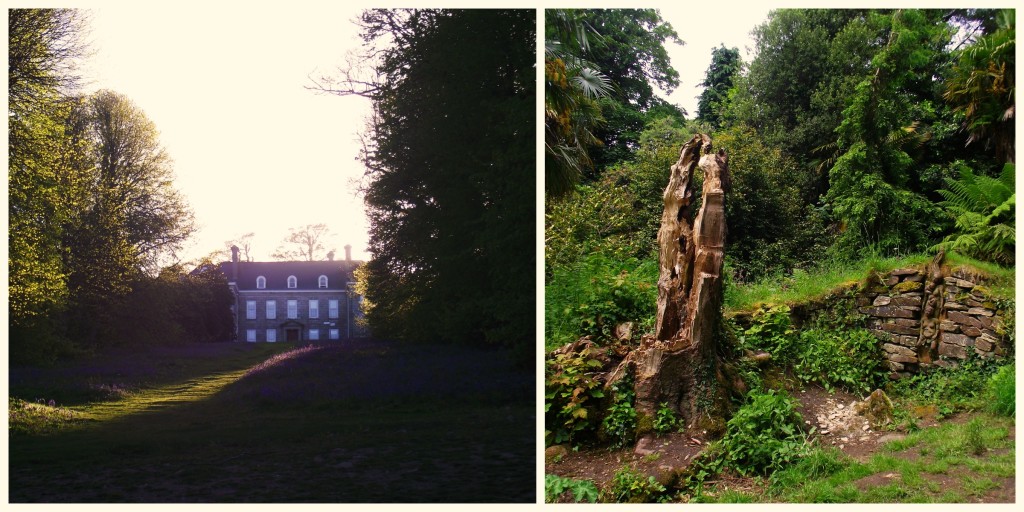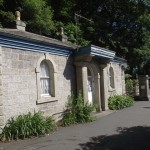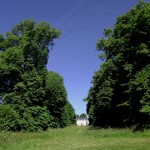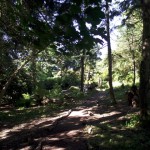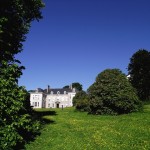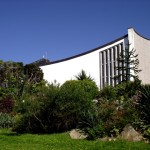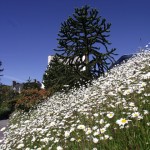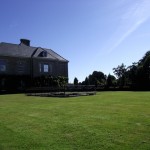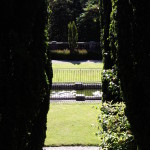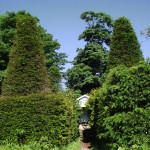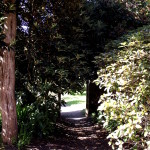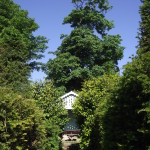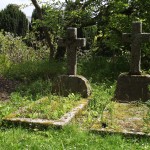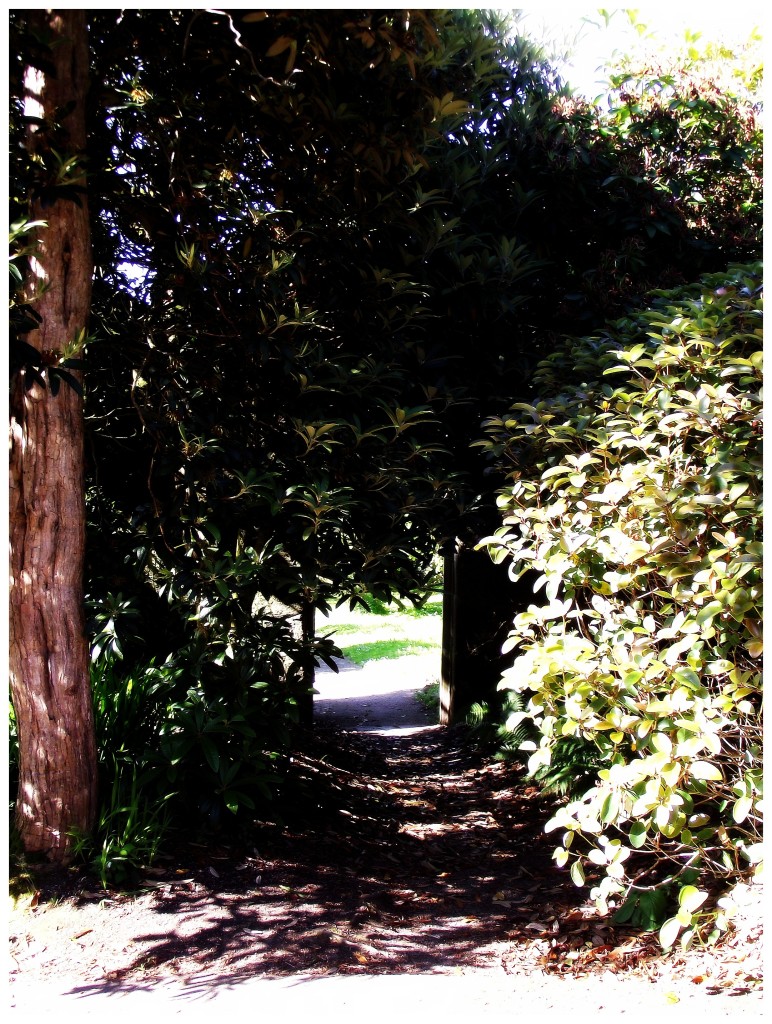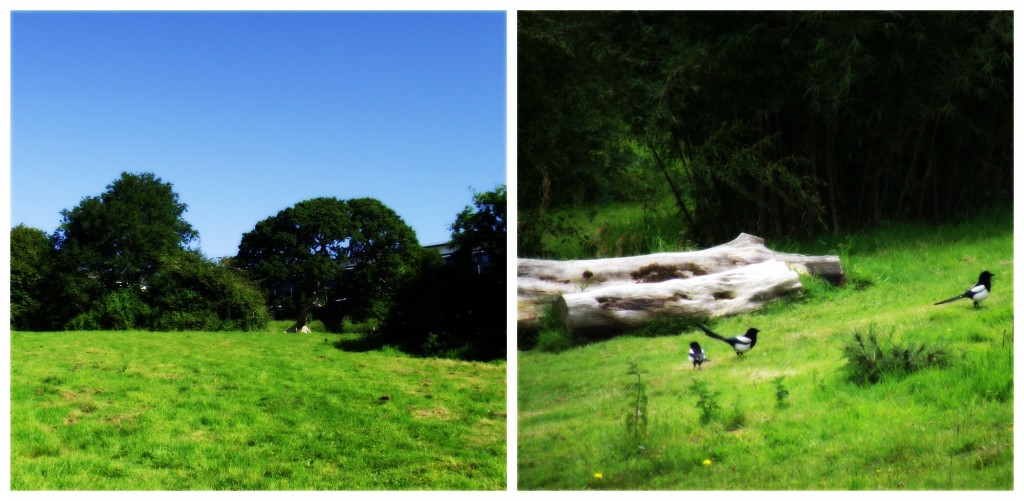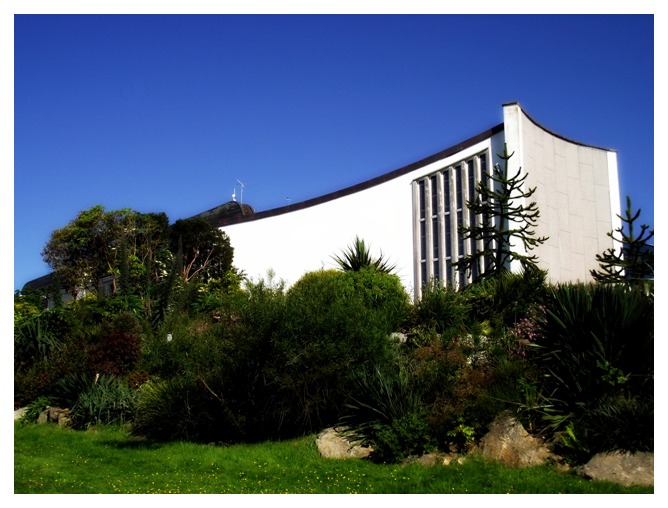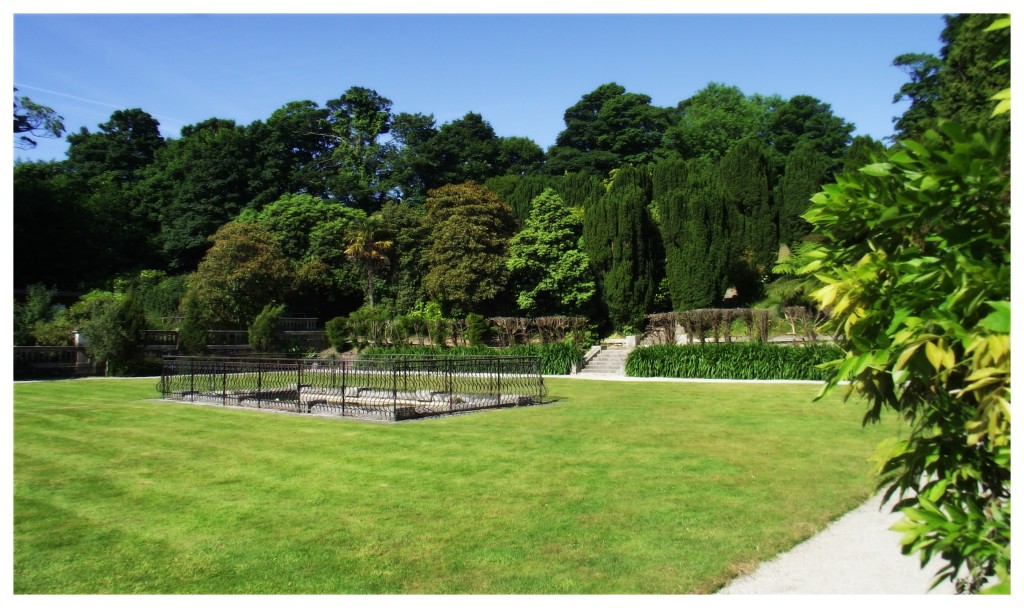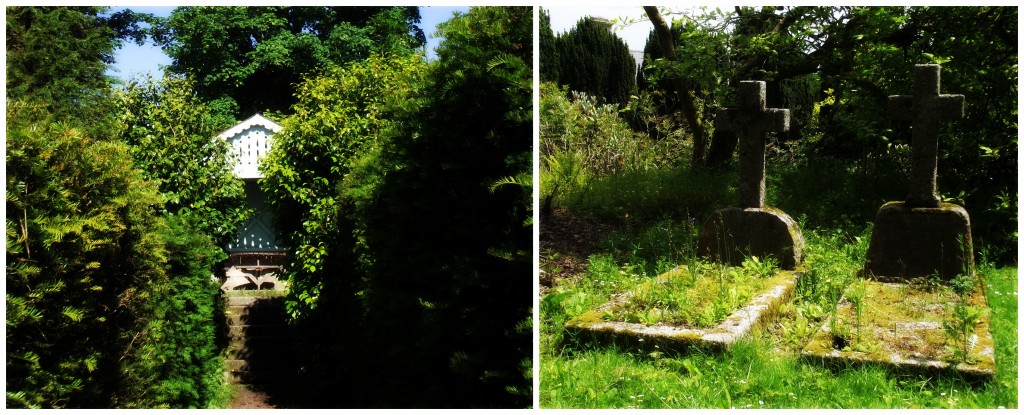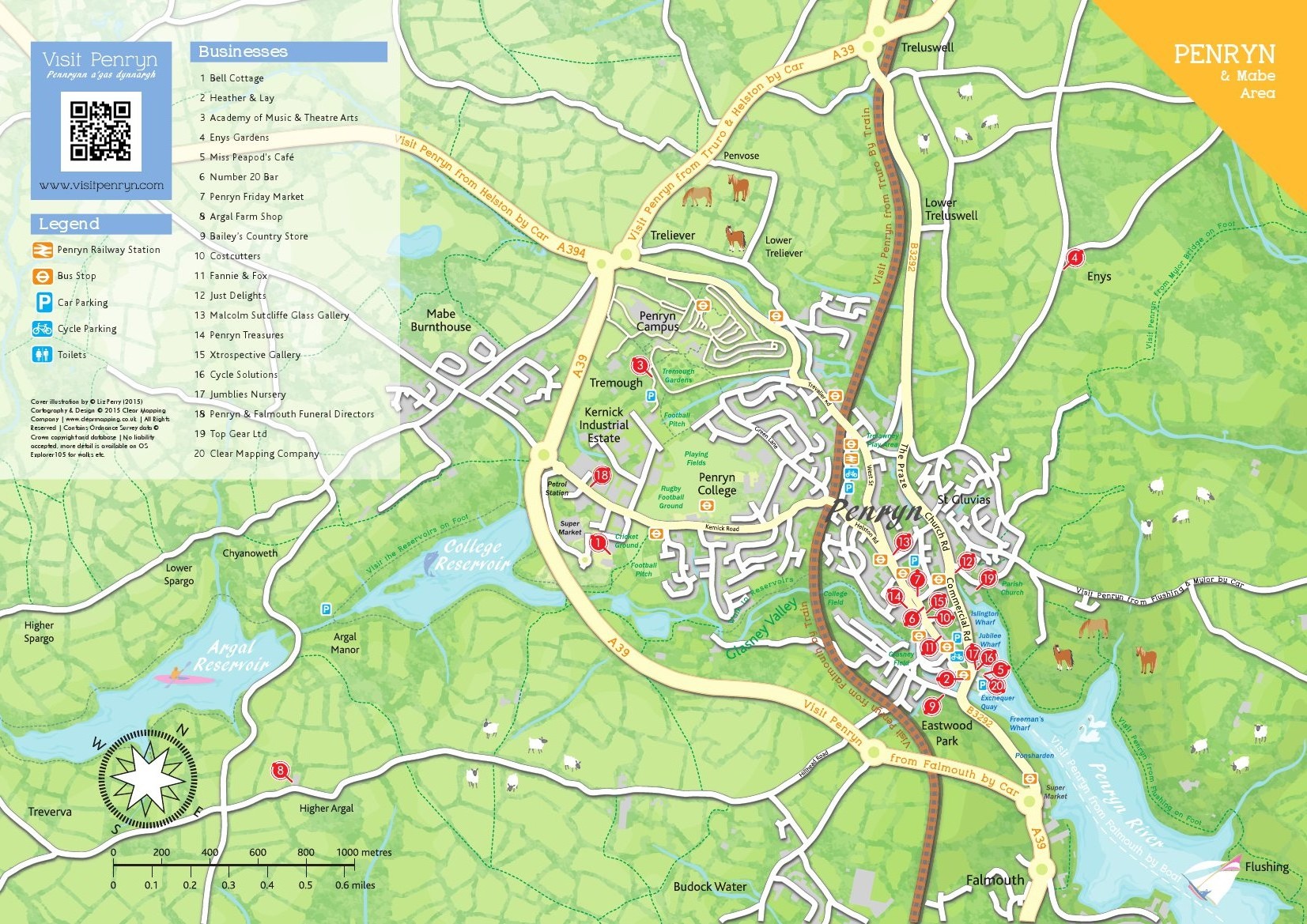Another enjoyable walk surrounded by beautiful gardens and steeped in history is one that takes you through part of one of Penryn’s oldest estates, Tremough Gardens. The gardens are free and open to the public all year round.
Begin the walk at the original entrance to the estate on Treliever Road.
The Lodge & Grotto
‘The lodge’, was added by one of Tremough’s most extravegant tenants during the nineteenth century. Benjamin Sampson, Junior, made many alterations and additions during his occupancy including lenthening the Carriage Driveway, to include the ornamental granite gate posts and adding the Lodge, home to a succession of gardeners over the years.
Opposite, ‘The Lodge’, almost hidden from view you will find a flight of narrow granite steps that lead you to, ‘The Grotto’. Added almost 100 years later by servicemen preparing for D-Day. At this stage in the estates history, Tremough House has become a convent boarding school run by a teaching order of Nuns, ‘Les Filles de la Croix’. The Grotto was constructed in 1944 and dedicated to, ‘Our Lady of Lourdes’, at the request of the Mother Superior. Today the star shaped pool, representing the American servicemen who helped with the construction, and two granite boulders bearing their names remain in place. Unfortunately the statue of Saint Bernadette kneeling and looking toward a figure of, Our Lady of Lourdes has been removed for repair and protection.
Carriage Drive & Rhododendrons
Following up the, ‘Carriage Drive’, you will see some of the oldest and most established trees and Rhododendrons that have drawn visitors from around the world, and for years supplied many other Cornish gardens including the beautiful local gardens of, ‘Enys‘, ‘Trebah’, ‘Penjerrick’, ‘Heligan’, ‘Lanhydroc’, ‘Glendurgan’ and ‘Trewithen’. National gardens included, ‘Bodnant’, (Wales), ‘Exbury’, (Devon), ‘Larachmor’, (Scotland), ‘Mt Stewart’, (Northern Ireland) and ‘The Botanic Gardens’, at Kew.
The history of Tremough’s Rhododendrons quite likely began during Benjamin Sampson’s occupancy. Wanting the best for his home and indeed seemingly unable to stop spending it would be in-keeping with Benjamin’s extravagant taste to remain at the forefront of Victorian trends and this included growing Rhododendrons.
It was lawyer and friend, William Shilson, who after controversially inheriting the Tremough estate on Benjamin’s passing, elevated Tremough Gardens to prominence amid the horticultural scene. A mix of perfect growing conditions, a close friendship with renowned plant collector Joseph Hooker and a dedicated and talented Head Gardener, Richard Gill, contributed to the successful legacy that lines the, ‘Carriage Drive’, you can enjoy today.
The Lime Avenue & The New Cretaceous Area
As you draw near the tight curve in the drive you will notice a clearing to your right and the impressive avenue of lime tress that create a frame for your first clear glimpse of the Tremough Mansion, or, Tremough House as it is referred today.
The trees were planted in the early eighteenth century to increase the viewing pleasure for future guests at the Mansion under construction at the same time.
If you walk to the start of the avenue of trees and pass amongst them to the left you will come to a recent addition to the gardens. Here nature and design combine to create one of many peaceful areas to sit and appreciate the environment. It is fair to remind visitors that as part of the University Falmouth & Exeter campus it is likely that the students can often be found taking equal advantage of these areas and you may well be treated to an impromptu performance of sorts!
Following the woodland style path back out through the trees you can now cross the tarmac drive onto another woodland style path and one of the current gardening teams projects. The area here is currently in development although still freely accessible in time plants from the cretaceous period to include magnolia, ficus and plane trees perhaps will create another quiet area of interest to enjoy.
Time For a Break?
Follow the woodland style path on through the trees and out on to the back of the Performance Center. The Performance Center has a well stocked cafe with lovely staff and welcoming atmosphere. Stop here for great coffee and tea menu plus some tasty panini’s and sandwiches.
On with the Stroll….The Walled Garden
Turning left from the performance continue to the top of the hill and follow the path to the right. You will come to a junction that takes you, right back down the hill, straight on, but you will miss too much this way, so we suggest turning left!
As you continue left up the hill look to your left among the flora and fauna for a small gate that takes you in to the, Walled Garden.
Possibly the most dated features of this area are the granite posts at the entrance that display a teardrop pattern. It is possible that these posts were once a part of a house on the estate during the seventeenth century.
The great granite walls were built around the orchards established by the Tilly family in the the mid nineteenth century. Of course the more elaborate edition of exotic plants and greenhouses, once complete with underground heating, were part of Benajamin Sampson Juniors legacy. He turned the original, ‘Kitchen Garden’, into a rare, ‘Pleasure Garden’. It is also possible that much of the stone and cobbles removed to develop the, Italiante Garden, were used in this area.
The greenhouses were essential to the Richard Gill and William Shilson’s Rhododendron Hybridisation programme, several of Gill’s original specimens can still be found in this area today.
The, ‘Parkland‘
Moving back out of the, Walled Garden turn left and follow the drive up and across to the front of, Tremough House. Take a moment to appreciate the view and imagine a timeline of changing landscapes. Evidence of Mesolithic hunters, Neolithic Settlements along with tools and chattles of the Bronze and Iron age have all been recorded from this site over the years.
At one time visitors could appreciate the view of deer roaming on through park land and among the splendid avenue of lime trees that remain today.
During the twentieth Century this area would have been alive with festivals, pagents and tea-parties and of course the estate is not without it’s own ghost tale or two. Headless horse not huntsmen are believed to, ‘thunder’, up the carriage drive on stormy nights!
The Chapel at the side of the house remain as another of the convent school’s legacy, although now deconsecrated and functions as a lecture theater. At one time there was a magnificent, yet rather more threatening than ghosts of headless horses, statue of the Archangel Michael wrestling a serpent attached to the end wall. The little black cat is still there diligently working to keep the seagulls and pigeons in order.
Much of the planting in the area and further down alongside the now media center can be credited to the most recent timeline of dedicated gardeners who continue to retain and repair, while sensitively developing and contributing their own style to the estates history.
Italiante Garden & Terraces
To the left of the house as you face it is another of Sampson Juniors elaborate additions that replaced all but a few reclaimed stones and cobbles of the Tilly’s farm buildings and cobbled yard with a more, ‘fashionable’, Italianate Style garden.
The pool at the center was originally installed as a swimming pool by Colonel Mountifort Longfield who purchased Tremough in 1926. Regular swimming parties were held here as well as the popular Mabe Music Festival. The pool continued to be used by the convent pupils until eventually it was fenced in.
The most obvious appeal of the terraces is the view that, on a clear day, enables you to see far into the distance and out to sea. Over the years this area has served as a croquet lawn and a tennis court as well as offering a peaceful place to relax in the Summer House.
The two graves belong to Dallas Wake a wealthy man who gave generously to the convent and Canon John Higgins who not only helped establish Tremough as a convent but spent the remainder of his life here.
The history of Tremough is both exstensive and fascinating. It is easy to spend hours just wandering and resting, something the current gardening team are keen to encourage. After all why work so hard to create and preserve such a beautiful part of our Towns history not to share it with everyone.
Many Thanks must go to David & Head Gardener Toby for their time and knowledge during my visit it was a pure delight.
______________
Feel free to continue on around the site all the cafe’s are open to the public. The walled garden remains open until dusk.
For more information on the Tremough estate why not book an appointment at the archives department of the University – 01326 254303
For more info on Tremough House take a look at Tremough Estate Penryn Part 1.
Have you been to Tremough Gardens yet? Do you have any great memories of its time as a convent? We would love to hear them.






